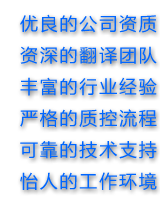“笑cry”表情被牛津词典评为年度词汇

It may not be a word by the strictest definition – but the emoji commonly known as “face with tears of joy” has been named the “Word” of the Year for 2015 by Oxford Dictionaries.
严格意义上来说它不是一个词汇——但为人熟知的“笑cry”表情已经被牛津词典评为2015年度“词汇”。
A breakthrough year for the pictograms first spread by texting teens has been marked by the Oxford Dictionaries’ recognition for a word or expression that “captures the ethos, mood, or preoccupations of that particular year.”
牛津词典的认可标志着表情符号突破性发展的一年。一个单词或短语能够“抓住那一年的精神、情绪或极其重要的事情”即是牛津词典的评定标准。而表情文字是最先在青少年发送的短信中传播起来的。
The body cited Hillary Clinton soliciting feedback in emoji and on-going debates about the skin tone of smiley faces, as evidence that “emoji have come to embody a core aspect of living in a digital world that is visually driven, emotionally expressive, and obsessively immediate.”
该机构引用希拉里·克林顿(Hillary Clinton)对表情符号征求反馈意见和对笑脸的肤色进行讨论为证,说明“在数字化的世界中,表情符号包含了生活中的视觉感官、情感表达等主要方面。”
Casper Grathwohl, President of Oxford Dictionaries, said: “You can see how traditional alphabet scripts have been struggling to meet the rapid-fire, visually focused demands of 21st Century communication. It’s not surprising that a pictographic script like emoji has stepped in to fill those gaps—it’s flexible, immediate, and infuses tone beautifully.
牛津词典部长卡斯帕·格拉斯沃说:“这代表着传统的字母式文稿正在努力达到21世纪交流的可视化、快速化要求。而出现了类似表情符号这样的东西来填补二者之间的缝隙并不令人惊讶——因为它具有可变性、迅速性,并蕴含了感情因素。”
“As a result emoji are becoming an increasingly rich form of communication, one that transcends linguistic borders. When Andy Murray tweeted out his wedding itinerary entirely in emoji, for example, he shared a subtle mix of his feelings about the day directly with fans around the world. It was highly effective in expressing his emotions.”
“表情符号成为交流沟通中越来越丰富的形式,它超越了语言的界限。比如,安迪·穆雷完全用表情符号把他的婚礼过程在推特上发布,他直接地与世界各地的粉丝们分享了当天他微妙又复杂的情绪。用表情符号完整有效的表达了他的情绪。”
Research by mobile technology business SwiftKey found that “Face with Tears of Joy” was the most heavily used emoji globally in 2015. Their statistics showed that the character comprised 20% of all emoji used in the UK in 2015.
移动技术公司SwiftKey的研究发现“笑cry”是2015年全球使用率最高的表情符号。统计数字显示,该表情占2015年英国使用的所有表情的20%。
Oxford Dictionaries defines a “word” variously as a “single distinct meaningful element of speech or writing” or “conceptual unit of language”, allowing emoji to take their place among more conventional communicative forms.
牛津词典定义一个“单词”为“语句或写作中的单个有意义的元素”或“语言中的概念单位”,这让表情符号能够代替单词在传统交际形式中的位置。
Oxford Dictionaries lexicographers also identified a sharp increase in the use of the word emoji itself in 2015. Emoji is a loanword from Japanese defined as “a small digital image or icon used to express an idea or emotion in electronic communication.”
牛津词典编纂者也发现在2015年单词“emoji”使用率迅速增加。“emoji”是日语的外来词,定义为“一个小数字图像或在电子通信用来表达思想或情感的图标。”
***各种emoji含义***
表情1

Slang translation: lol; lmao / Old-fashioned words: laughing out loud; laughing my ass off; I say, that’s rather funny
俚语:LOL;Lmao/解释:大笑;笑死我了
表情2

Slang translation: beautifull; gawgeous; hotttt / Old-fashioned words:beautiful; gorgeous; jolly attractive
俚语:beautifull;;gawgeous;;hotttt/解释:美丽;优雅;极具吸引力的
表情3

Slang translation: xoxo; xoxoxox / Old-fashioned words: hugs and kisses; hugs and kisses (in slightly greater quantity)
俚语:xoxo;xoxoxox/解释:抱抱亲亲;抱抱亲亲(程度加强)
表情4

Slang translation: GJ; job; haha / Old-fashioned words: good job; good job; well done, that was rather funny
俚语:GJ;job;haha/解释:好工作;干得漂亮;那真好笑
表情5

Slang translation: oml; ughh; ughhh / Old-fashioned words: Oh my Lord; oh damn; oh damn and blast
俚语:oml;;ughh;ughhh/解释:噢,天哪;噢,该死的
表情6

Slang translation: ffs; grr / Old-fashioned words: for fuck’s sake; I’m furious (in fact I’m so furious, I’m growling)
俚语:ffs;;grr/解释:看在他妈的份上!;我很火大(事实上我十分火大,快炸了)
表情7

Slang translation: cmeo; crbt; waa / Old-fashioned words: crying my eyes out; crying real big tears; I’m so very unhappy that I’m wailing
俚语:cmeo;;crbt;waa/解释:痛哭;大颗大颗眼泪掉;我很不开心,我在哭
表情8

Slang translation: zzz; btd; gnstdltbbb / Old-fashioned words: I am sleepy; I’m bored to death; good night, sleep tight, don’t let the bed bugs bite
俚语:zzz;btd;gnstdltbbb/解释:我好困;我快无聊死了;晚安-别让臭虫咬到!
Vocabulary
pictogram: 象形图
ethos: 民族精神;气质;社会思潮
preoccupation: 关注的事物
itinerary: 日程
英文来源:独立报
译者:张卉
审校&编辑:丹妮
随机文章













